I'm sure you've been in a situation where you wanted to print something out, but you had trouble with cropping or bleed. Well, you've come to the right place.
You will learn how to add crop marks and bleed in Photoshop with a simple step-by-step explanation. Not only will you learn that, but you'll also find out effective crop marks and bleed techniques.
I assume you have heard of Adobe Photoshop; otherwise, you wouldn’t be here, am I right?
But, just in case you haven’t heard, here is a piece of information you’ll need to understand this article better.
What is Adobe Photoshop?
It is such a powerful tool and versatile. Most known in the world of digital design. Every photographer, artist, or designer has at least once tried it. Just ask someone you know.
Why is it so popular?
Well, let me tell you. The array of features is what makes it popular. It enables users to create stunning and professional look-a-like designs. From print materials to digital artworks, you name it.
Besides all the features it offers, you need to know Adobe Photoshop has the ability to incorporate bleed and crop marks. That’s why you are here!
You need to understand what are crop marks and bleed first, so let's dive into that.
What Are Crop Marks?
Crop marks for graphic design are small tick marks that you must use when printing your design. It gives the printer a precise indicator of where to trim your design.
You might think they are irrelevant, but trust us, you need these silent heroes.
Crop marks serve as a guide to the cutting process, ensuring your final product is polished and sleek, just like you envisioned.
You can’t forget it while using Photoshop because, without it, some important parts of your design might get chopped off.
To make it sound simpler:
- Crop marks indicate the line where a cut should be made to achieve the desired print format. They are usually inserted outside the overflow lines to stay within the cropping limits - the border.
- The cut is made with a paper cutter. It can be manual, but its handling requires much skill. Compared to automatic cutters that are more widespread in printing practice, it needs to improve cutting accuracy and speed.
- In some professional prints, you will come across the so-called matching marks (in offset printing, they are used for the correct overlapping of individual colors). A color palette is also often used. It checks that the colors are printed in the right hue and saturation.
- The document size must be set to the exact size of the final product. For example, if the cut format of your business card will be 85×54 mm, we have to set up the document as well.
So, the next time you're working on something amazing and you see those little lines, remember that they're the ones protecting your design and ensuring everything looks the best.
What is Bleed?
You’ve come up with a beautiful birthday invitation card for your son. You used Photoshop for that. You want your color and image to extend all the way to the edges, but you don’t know how to do it.
Now is the right time for you to learn how to do it in an efficient and quick way.
Let us introduce you to bleed.
Bleed is the marginal part of the document. For all documents that contain some object (e.g., vector, image, etc) located at the very edge of the document, it is necessary to add a margin and place those objects within the margin zone.
The drop zone must be at least 3 mm. To put it simply, the bleed is added to the document because every document is trimmed after printing, and the bleed zone is precisely the part that is cut.
When cutting a document, an unwanted white edge might appear on the very edges, i.e., the paper after the document is trimmed to the desired format along the cutting line ("crop marks" - the line of the finished trimmed product.)
To conclude, bleed serves as a little extra space around your design developed to ensure you won’t end up with white borders.
No one wants a thin white outline at the end product, which makes your work kind of unfinished. And I’m sure you want the best for your son, right?
So whenever you start making something special, remember to use bleed to keep your design look finished and polished.
How To Add Crop Marks and Bleed in Photoshop
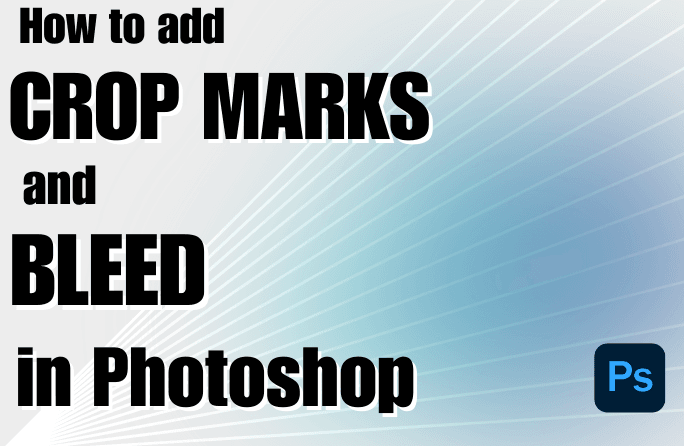
When you’re getting ready to work with these two options in Photoshop, you first must set up your document properly.
“What does it mean?” you might ask.
Well, we are talking about configuration, and to be exact, configuration of your document’s settings. You have to set them to include all the necessary space for the bleed, as well as for crop marks.
For crop marks, the document needs to extend adequately beyond crop marks.
The first thing to do is adjust the canvas size to adapt the bleed area. This way, you will have enough room for elements you want to extend to the edge.
Furthermore, trust us when we say it is crucial to enable rulers and guides within the program to help you position your elements and crop marks precisely.
When you do these things carefully when you set up your Photoshop document with these instructions, you can be sure you’re on the right path to the professional printing process.
Step-By-Step Guide on How to Add Crop Marks and Bleed in Photoshop
When working with Photoshop to add crop marks and bleed to your design, it's crucial to follow a systematic process to ensure precise and professional results. Here's a detailed step-by-step guide:
1. Open Your Design in Photoshop: Begin by launching Photoshop and opening your design file. Here's a screenshot of the Photoshop interface with the design file loaded.
2. Switch to CMYK Color Mode: Before proceeding, ensure that your design is in CMYK color mode, as this is crucial for accurate color representation in print. Here's a screenshot showing the process of switching to CMYK color mode.
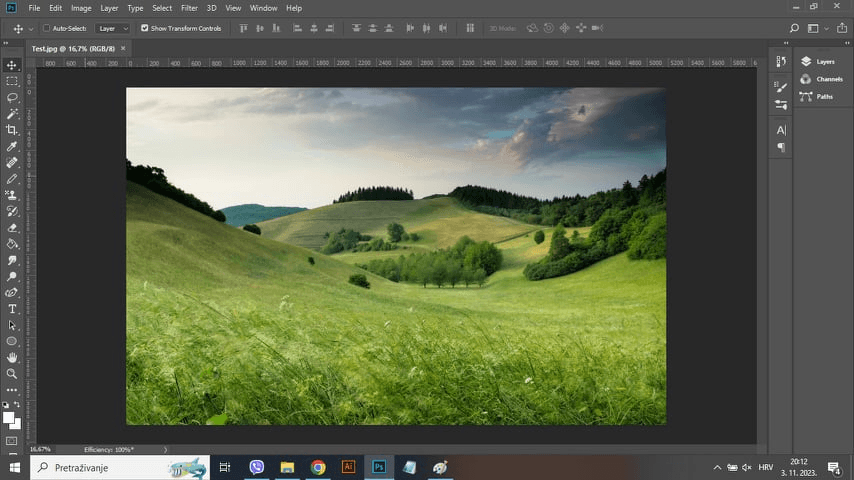
3. Display Rulers and Guides: Enable the rulers and guides to assist in precisely placing the crop marks. Here's a screenshot demonstrating how to display rulers and guides in Photoshop.
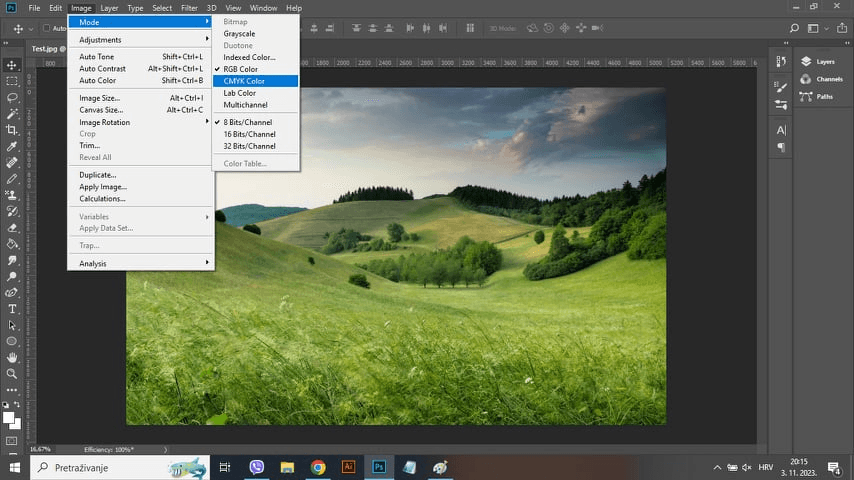
4. Use the Crop Tool for Crop Marks: Utilize the Crop Tool to define the areas you want to keep and remove, effectively setting up the crop marks. Here's a screenshot highlighting the use of the Crop Tool.
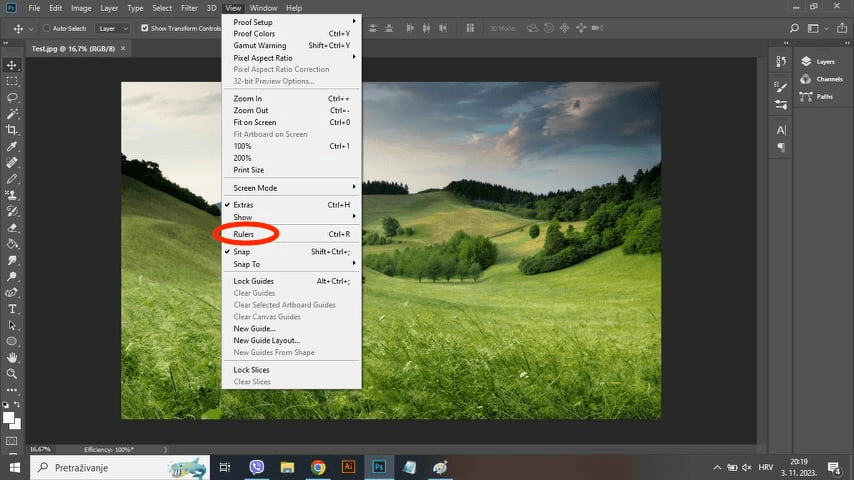
5. Adjust Canvas Size for Bleed: Navigate to the "Image" menu and select "Canvas Size" to add the necessary bleed to your design. Here's a screenshot demonstrating how to adjust the canvas size to incorporate bleed.
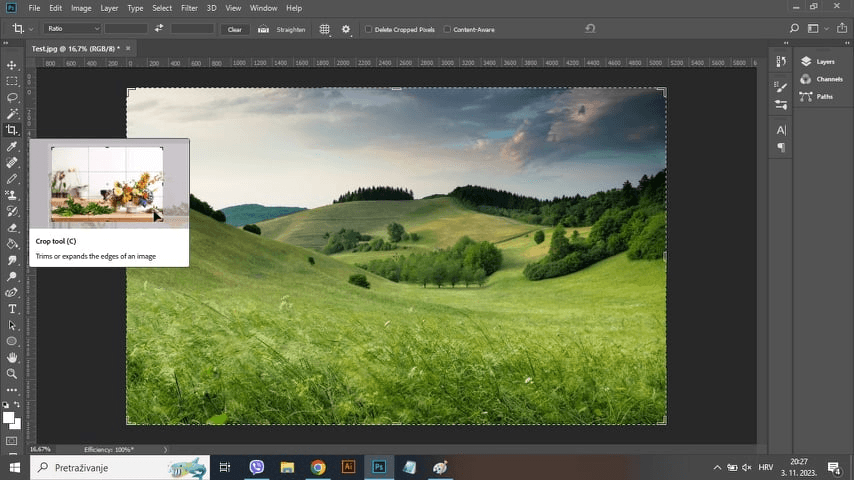
6. Fine-tune Print Settings: To ensure accurate printing, adjust the print settings according to your specific requirements. Here's a screenshot of the print settings window in Photoshop.
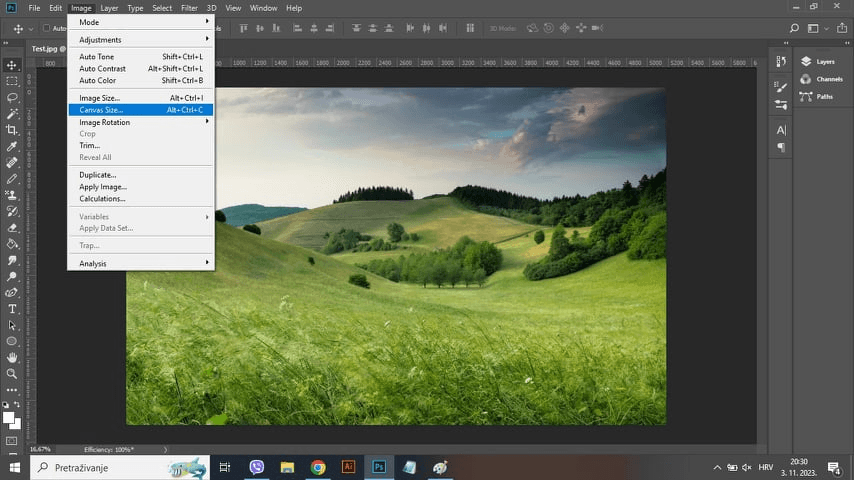

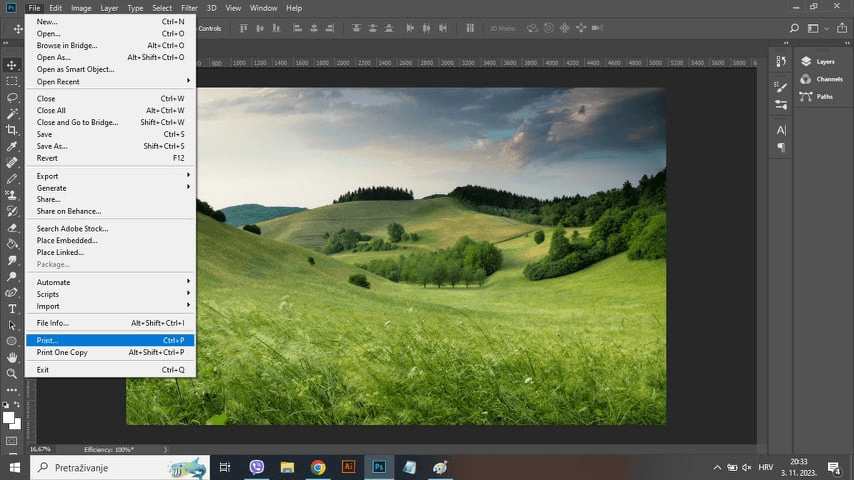
By following these step-by-step instructions and referring to the screenshots, you can effectively incorporate crop marks and bleed in your Photoshop design.
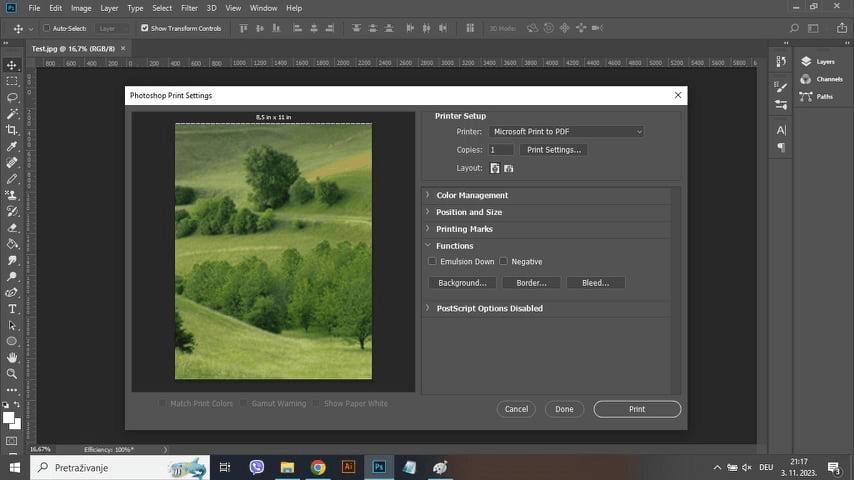
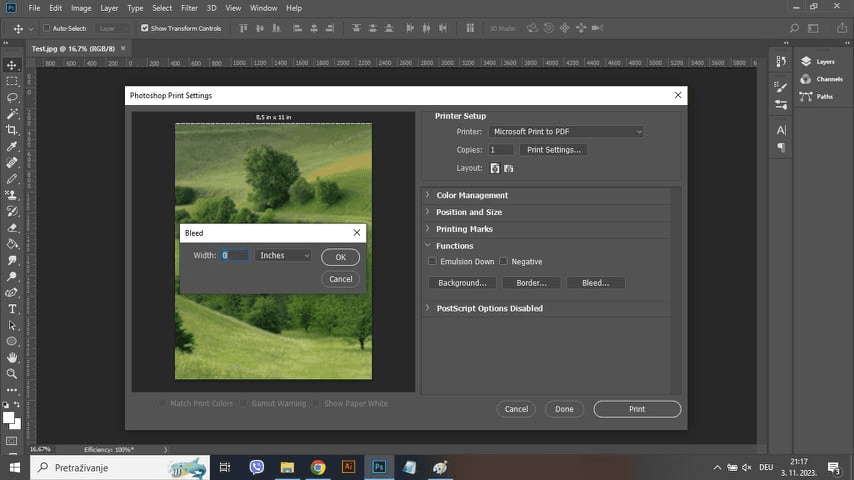
If you prefer YouTube videos for watching tutorials, here is the one we like most.
How to Add Bleed in Adobe Photoshop & Save with Trim Marks for Print
It is concise, and it shows you exactly everything you need to know about adding crop marks and bleed.
Helpful AI Image Editor:
Want to give your photos and graphics a super quick makeover? AI image editor Imagewith.ai is just the thing for you. Whether you're a pro or just love playing around with pics, it's going to revolutionize the way you edit.

With just one click, you can make your photos shine, delete backgrounds like a boss, remove any unwanted bits effortlessly, and even make your images look better without losing quality.
It'll even bring back those precious memories to life just the way you remember them.
And the best part?
You don't have to wait for the future; you can start using the AI image editor today! You can easily say goodbye to tedious manual edits and say hello to efficient and creative editing.
Tons of people and businesses are already on board, loving the perks of our AI image editor.
Final Thoughts
In the end, getting the hang of adding crop marks and bleed in Adobe Photoshop is a real game-changer if you're serious about nailing those print designs.
By understanding the ins and outs of how Photoshop fits into the big picture and appreciating the significance of crop marks and bleed, you're basically placing yourself up for some very slick and professional-looking print materials.
So, the next time you're gearing up to create some invitations, business cards, or even some posters, don't forget to keep these tips in your back pocket.
They're like the secret sauce that'll take your designs from just 'okay' to 'whoa, that looks amazing!'
And who doesn't want that, right?
Armed with this fresh wisdom, you're all set to dive headfirst into the wonderful world of print design and make your creative ideas come to life in ways you never thought possible.






